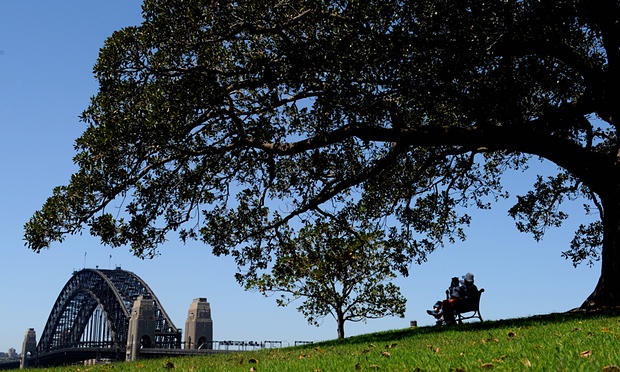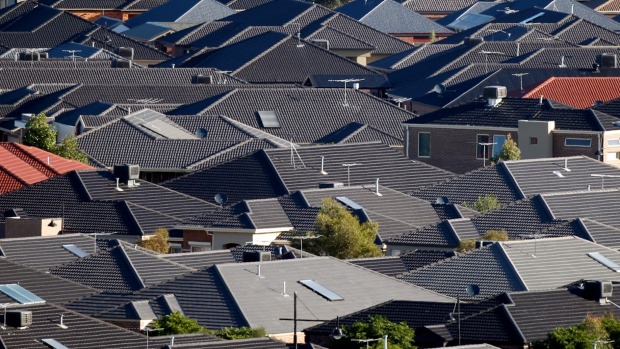Australia’s Environment Minister says more ‘urban canopies’ will reduce heat within city environments and improve health outcomes

A Moreton Bay Fig tree creates a shady sanctuary in the heart of Sydney. The Australian Conservation Foundation says trees are the ‘natural air-conditioners’ of cities.
Government’s Plan to Make Cities Cooler and Greener
Australia’s environment minister, Greg Hunt, says the federal government will establish its vision for improved urban tree coverage within 18 months.
 The government would work directly with cities throughout 2016 and 2017 to set decade-by-decade goals for the creation of “urban canopies”, he said.
The government would work directly with cities throughout 2016 and 2017 to set decade-by-decade goals for the creation of “urban canopies”, he said.
The creation of tree cover, he stated, would reduce heat within city environments and improve health outcomes. “Our task is to establish those goals and increase them progressively over each of the decades,” Hunt said.
“That allows us to make progress to 2020, which we’re already doing through the 20 Million Trees program, the Green Army program and the National Land Care program.”
Improving the Liveability of Cities
“Green cities — cities with high levels of trees, foliage and green spaces — provide enormous benefits to their residents. Increasing urban canopy coverage decreases heat, which improves health and quality of life,” stated Minister Hunt.
In his speech to the Sydney Business Chamber, he emphasised the susceptibility to extreme heat of people living in large cities. Urban development pressures can lead to treeless streets that amplify the “heat island” effect on hot days.
As well as decade-by-decade goals to develop urban canopies, the government will “look at building rooftops with green cover,” the Minister said.

Urban heat islands can significantly increase temperatures in cities, research shows. Photo Credit: Sydney Herald

